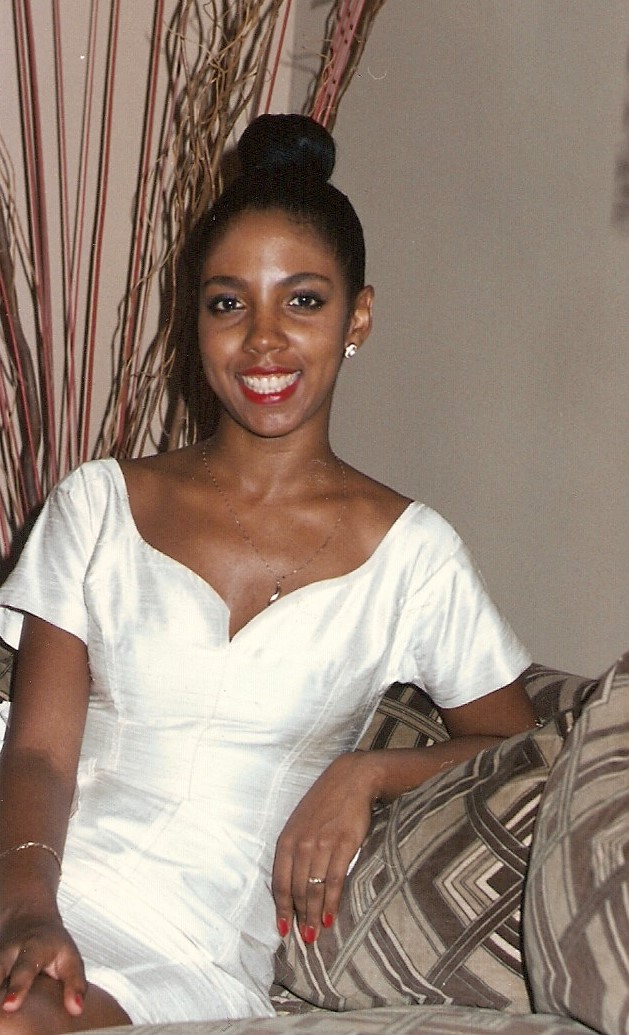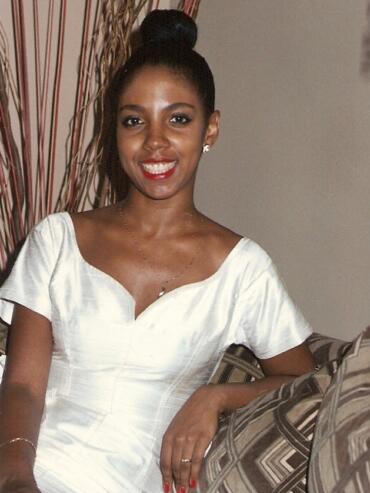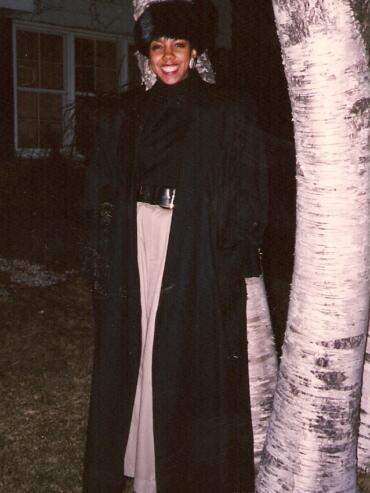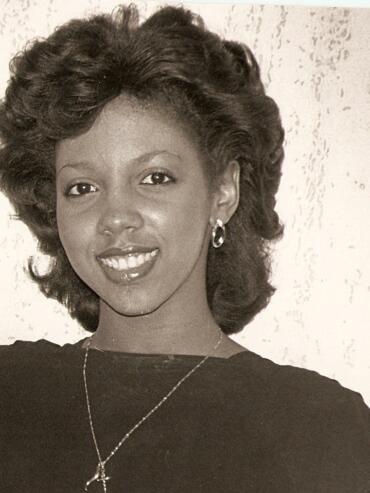June 2023
Month 20xx
Rachael Hoad & Nika Petrosian
Charmaine Gooden
Let’s set the record straight. “My story in fashion is really about representation,” says Ebonnie Rowe. In an industry plagued by racism, and a dominant Eurocentric beauty standard, Rowe saw an opportunity to further the positive representation of Black individuals, while challenging the negative stereotypes that haunted the media scene. From 1983 -1986, her editorial articles in Contrast Magazine documented the Black fashion community and revealed their untold stories and challenges.
Forty years later, she is still committed to advancing diversity and inclusion in all aspects of her career and life.
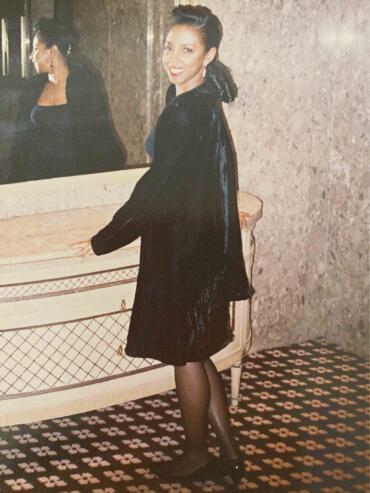
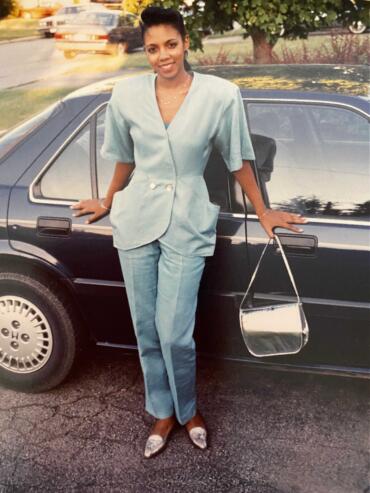
Early Life and Career
Born in Montreal, Quebec in 1962 to Barbadian parents, Ebonnie Rowe traveled between Ottawa, Kingston and Barbados during her childhood, but spent most of her years growing up in Toronto from the age of twelve. Rowe recalls her interest in writing since she can remember, “I’ve always loved English from when I was a child. I’ve loved reading, I loved plays.” It’s no surprise that she went on to study English literature at the University of Toronto.
In the early 1980s, Rowe began her position as a contributing editor at Contrast Magazine, a position that provided a perfect entry point for her true passion of social upliftment. “I wasn’t really a big fashion maven,” she says. “The honest truth is, my goal with this column was to show beautiful people with substance behind them and positive things to say.”
This special section creates a spread of 2 photos that will jut out into the side margin.


The honest truth is, my goal with this column was to show beautiful people with substance behind them and positive things to say.
She fondly recalls a piece she wrote in 1986, about a 17 year old girl, Laurieann Gibson, who she described as, “ahead of her time and beyond her own age” in regards to her hopes and dreams and what she wished to represent. Fast forward 35 years, Gibson, now an accomplished choreographer who has worked with the likes of Meghan Thee Stallion, Alicia Keys, Lady Gaga and Beyonce, reflects on the article written by Rowe and is overcome with emotion after hearing her younger self.
“It’s always gratifying and fulfilling to know that something that you’ve done has had an impact,” says Rowe, explaining how almost 40 years later Gibson has transcended to be one of the most successful choreographers of her time, while maintaining the same ideals she held as a 17-year old throughout the entirety of her career.
Breaking Barriers
Reflecting upon her time at Contrast Magazine, she recalls the tokenism that, until recently, plagued the industry. “The main thing would be what the [Black] models were experiencing in fashion,” she says. “If they were going to sign someone, it was going to be someone with lighter skin, straighter hair. You wouldn’t see one person with cornrows. Ever.”
When profiling models, Rowe felt obligated to not only acknowledge their talent and beauty, but would attempt to pull something instructive or inspirational. “Division comes from ignorance,” she says. Her upliftment of Black models and talents provided a glimpse into their person and a deeper understanding on a human level for readers, in hopes to bridge the gaps of representation.
Rowe understood that younger generations required a new method of instruction in order to further representation. “Young people don’t like to be hit over the head with messages,” says Rowe. Recognizing this, she continued her social upliftment and fight for representation through Honey Jam, a non-profit multicultural artist development programme, which she founded in 1995. “I’m trying to spread that diversity, equity and inclusion to as big an audience as possible,” says Rowe.
“I’d like people to expect the unexpected, to overcome preconceived bias,” she says. “So I would go out of my way to find artists performing in genres that they weren’t expected in, such as a Black artist performing opera or country music.” Through Honey Jam, Rowe advocates for performers to be seen in a broader context and approaches larger organizations, pushing them to make diversity and inclusion a priority.
Through Honey Jam, Rowe advocates for performers to be seen in a broader context, and approaches larger organizations, pushing them to make diversity and inclusion a priority.
Rowe notes that after 2020 and the death of George Floyd, the industry shifted as well as the receptiveness of larger organizations to diversify their talent and themselves. “The fight for social justice did not begin in 2020 … but Covid allowed for an unprecedented amount of down time for reflection. It was a perfect storm,” she says. “It took over our consciousness. People were stunned and felt the need to do something.”
She understands better than most the difference between ticking a box versus real efforts to further diversity and inclusion. “The ones who blew me off for years, I have to question if that sudden responsiveness was genuine,” Rowe states. While 2020 reignited the fight for social justice, Rowe notes that more must be done to continuously make diversity a priority rather than, “I did this in February for Black history month so I’m good for the rest of the year,” she says.
Influence and Legacy
Her ability to capture the voices of young talent is unparalleled, continually uplifting individuals that have been consistent in their dedication to furthering representation. Rowe utilized her coverage of fashion and individuals in the industry as an opportunity to present positive representations of Blackness, in order to combat the negative stereotypes that perpetuated the media scene.
In 2021, Rowe was awarded a trailblazer award by the Canadian Independent Music Association. She recalls accepting the award, and asking “Have you ever thought about diversifying your personal life? Take a look around the table when you have friends over for dinner.”
Her upliftment of Black models and talents provided a glimpse into their person and a deeper understanding on a human level for readers, in hopes to bridge the gaps of representation.
About the authors:
Over the years Prof. Gooden has built a multi-media career as an editor, writer, presenter, public relations consultant and special event manager, spokesperson, host, and educator. She...
Read MoreOver the years Prof. Gooden has built a multi-media career as an editor, writer, presenter, public relations consultant and special event manager, spokesperson, host, and educator. She...
Read MoreAbout the author:
Over the years Prof. Gooden has built a multi-media career as an editor, writer, presenter, public relations consultant and special event manager, spokesperson, host, and educator. She...
Read More

